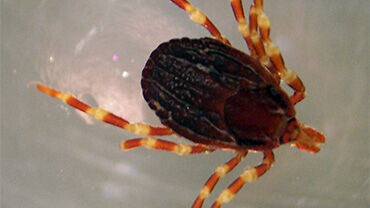Communication toolkit on tick-borne diseases and preventive measures
This toolkit aims to assist EU Member States in devising communication activities to raise awareness about the health threats related to ticks, as well as promoting preventive measures to reduce the risk of developing tick-borne diseases. The toolkit targets children, travellers, the general public, and health practitioners.
Download

Who do you want to reach?
The material is designed to direct key messages on tick-borne diseases and their prevention at four specific and pre-identified audiences for whom the campaign materials can be particularly relevant.
- children
- travellers
- general public living in endemic areas
- healthcare practitioners
The material is designed to inform the audience on
- how to avoid ticks bites
- how to recognised the habitats where ticks can be found
- how to recognise and correctly remove ticks
- tick-borne diseases preventive methods and treatments
- how to recognising the diseases and its phases
How to adapt the materials?
Our materials can be adapted according to your language, cultural specificities and campaign focus. The files are provided in:
- PDF flattened format for easy reproduction: this format can be used to view the material and for printing purposes
- Adobe InDesign format for professional use: this format can be used to modify the layout and/or the text
- Word files: this format can be used to facilitate translation in your language
Materials targeting healthcare practitioners
The aim of communications targeted at healthcare practitioners, in both endemic as well as nonendemic areas, is to ensure correct and timely diagnosis of tick-borne diseases by increasing health practitioners’ awareness of the symptoms and options for diagnosis and treatment. Health practitioners are also encouraged to provide advice on preventive measures where necessary.
These materials are intended to deliver clear and simple messages to ensure a clear understanding by the health practitioner with regard to diagnosis and treatment, as well as to allow for the advice to be transferred in a coherent manner to the patient.
Materials targeting travellers
The aim of communications targeted at travellers is to raise awareness of the risk of contracting a tick-borne disease when travelling to endemic areas and to encourage travellers to take the appropriate measures.
Materials targeting the general public in endemic areas
The aim of communications targeted at the general public in endemic areas is to create a significant level of awareness and understanding of the risks associated with ticks.
These materials are intended to deliver clear and simple messages in a visually interesting way to capture the audience’s attention. They have been created with a view to communicate with as broad an audience as possible.
The information contained in these two materials is in general very similar. Presenting two options of templates allows for countries to choose which material can be best suited for their needs: a shorter version with more concise information and a longer version where, for example, details on correct tick-removal procedures are included.
Materials targeting children in endemic areas
The aim of communications targeted at children is to, in a simple and easily understandable manner, create awareness about what ticks are, how to avoid them and what to do in the case the children get bitten by a tick.
The messages are presented in a visually interesting way to capture the children’s attention. They have been created with a view to communicate with children of 7-12 years of age.
As children are generally likely to seek further advice, it would be important to provide accompanying materials to teachers and other people employed in the above-mentioned locations, and if possible to parents, in order to ensure that they are able to discuss with children about ticks.






